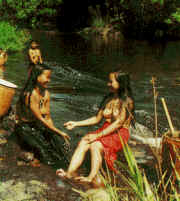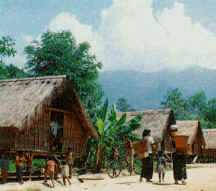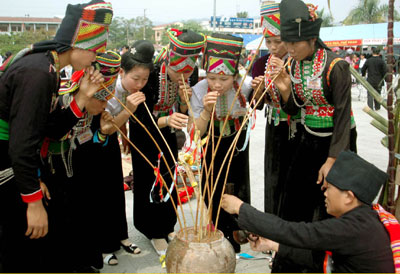The Ra glai have a population of more than 70,000 inhabitants, living chiefly in southern Khanh Hoa province and Ninh Thuan province. They are also called Ra glay, Krai, Orang glai, No-a na and La Vang. Their language belongs to the Malayo-Polynesian Group.
Formely, in their nomadic life, they grew rice arid maize in slash-and-burn plots of land. Today, they also develop wet rice. Hunting, picking, gathering and handicrafts (chiefly blacksmithing and basketry) play an important role in each family.
The Ra glai live in separate pa-lay (villages) in a high and flat terrain, near the source of water. Stilted houses are their traditional abodes. It is not more than a metre high from the ground to the house floor. The members of the household usually comprise the father, the mother and unmarried children. The pa-lay is headed by a po pa-lay (village chief) who is generally the first land reclaimer. He is responsible for the performance of the heaven-and-earth praying ceremony when a serious dry spell occurs
Matriarchy remains in existence in Ra glai society, the children take the family name of the mother. The mother or the wife as house owner has the right to decide family affairs.
If a young girl wants to marry a young man, she will ask her parents to prepare the wedding ceremony. In marriage, besides the right of the mother, her younger brother has a fairly important say.
The Ra glai has many family lineages: Cham Ma-lec, Pi Nang, Pu Puoi, Asah, Ka-to and others with the Cham Ma-lec being the largest. Each family lineage has its own history and tale retracing is origin.
The Ra glai conceive that there is a spiritual world known as Giang including the goodies and the devils, and believe in the existence of the soul of dead person. They possess stories in verses, legends and old tales of profound historic, artistic and educational value. Alternating songs are popular in cultural and artistic life. The gamut of musical instruments is large. Apart from gongs, there are monocords, lip organs and bamboo tube instruments.
Every year, after harvest, all villagers gather together, and kill buffaloes and oxen to present thanksgiving to Giang and to enjoy the new rice.






